Facilitating genome structural variation analysis
Asian Reference Genome Project
Genome assembly and chemogenomic profiling of National Flower of Singapore Papilionanthe Miss Joaquim ‘Agnes’ reveals metabolic pathways regulating floral traits
Direct identification of A-to-I editing sites with nanopore native RNA sequencing
Whole genome comparison of Vibrio harveyi strains from the Mediterranean Sea
Time- and memory-efficient genome assembly with Raven
Efficacy of next-generation sequencing in bacterial zoonoses diagnostics
Detecting Base Modifications in DNA Sequences
A step towards neural genome assembly
Deep learning approach to determining the type of long reads
Benchmarking metagenomic classification tools for long read sequencing data
Hybrid metagenomic assembly enables high- resolution analysis of resistance determinants and mobile elements in human microbiomes
Disentangling Sources of Influence in Online Social Networks
Approaches to metagenomic classification and assembly
Supervised learning approach to long read classification
Yet another de novo genome assembler
RNA Splice Aware Mapper
Horizontal silicon nanowires for surface-enhanced Raman spectroscopy
Silicon Nanowires Substrates Fabrication for Ultra-Sensitive Surface Enhanced Raman Spectroscopy Sensors
Edlib: a C/C ++ library for fast, exact sequence alignment using edit distance
Fast and accurate de novo genome assembly from long uncorrected reads
Inference of influence in social networks
Rala - Rapid layout module for de novo genome assembly
Ra – Rapid de novo genome assembler
Read classification using semi-supervised deep learning
MinCall | MinION end2end convolutional deep learning basecaller
De Novo Assembly using Unsupervised Read Categorization
De Novo Assembly using Semi-Supervised Read Categorization
Algorithms for Layout Phase of De Novo Genome Assembly
Unsupervised Learning of Sequencing Read Types
Differentiating between Exogenous and Endogenous Information Propagation in Social Networks
Modeling Peer and External Influence in Online Social Networks: Case of 2013 Referendum in Croatia
Trade-offs in query and target indexing for the selection of candidates in protein homology searches
Informatics
RNA Transcriptome Mapping with GraphMap
Evaluation of tools for long read RNA-seq splice- aware alignment
SIFT missense predictions for genomes
Fast and sensitive mapping of nanopore sequencing reads with GraphMap
SWORD—a highly efficient protein database search
Big data in the age of genomics
SWORD—a highly efficient protein database search
Racon - Rapid consensus module for raw de novo genome assembly of long uncorrected reads
Evaluation of hybrid and non-hybrid methods for de novo assembly of nanopore reads
TGTP-DB – a database for extracting genome, transcriptome and proteome data using taxonomy
Statistical Inference Framework for Source Detection of Contagion Processes on Arbitrary Network Structures
Identification of Patient Zero in Static and Temporal Networks : Robustness and Limitations
Continuum model of gene expression
SW#db: GPU-Accelerated Exact Sequence Similarity Database Search
Some new results on assessment of Q-gram filter efficiency
ExoLocator—an online view into genetic makeup of vertebrate proteins
FastSIR algorithm : A fast algorithm for the simulation of the epidemic spread in large networks by using the susceptible–infected–recovered compartment model
Approaches to DNA de novo Assembly
From Short to Long Reads: Benchmarking Assembly Tools
SW#–GPU-enabled exact alignments on genome scale
Protein database search optimization based on CUDA and MPI
Epidemic centrality — is there an underestimated epidemic impact of network peripheral nodes?
Proteins and Nucleic Acids in Space and Time
Aspects of DNA Assembly Acceleration on Reconfigurable Platforms
Prediction of interacting protein residues using sequence and structure data.
CUDA implementation of the algorithm for simulating the epidemic spreading over large networks
Large-Scale Functional Organization of Long-Range Chromatin Interaction Networks
BioMe : biologically relevant metals
Phase diagram of epidemic spreading — unimodal vs. bimodal probability distributions
Epidemic centrality – identifying “superspreaders” in complex networks
Parallel Protein Docking Tool
Prediction of Protein-Protein Interaction Sites in Sequences and 3D Structures by Random Forests
Comparison of the RADIUS and Diameter Protocols
Computational method for prediction of protein-protein interaction sites
PSAIA - Protein Structure and Interaction Analyzer
Metals in proteins: correlation between the metal- ion type, coordination number and the amino-acid residues involved in the coordination
Prediction of protein-protein hetero interaction sites from local sequence information using Random Forest
Correlating protein surface shape and hydrophobicity using spherical harmonical expansions
Protecting and controlling Virtual LANs by Linux router-firewall
Guidline to maintain an efficient email working environment
The content charging model in mobile packet networks
WLAN securtiy
Mobile content efficiency and business model
Content charging models in mobile packet networks
Teaching
University undergraduate
- Algorithms and Data Structures (Lecturer in charge)
- Algorithms and Data Structures (Lecturer in charge)
- Bioinformatics 1 (Lecturer in charge, Lecturer in charge, Lecturer in charge)
- Bioinformatics 1 (Lecturer in charge, Lecturer in charge)
- BSc Thesis (Lectures)
- Final BSc Thesis (Lectures)
- Project C (Lectures)
- Software Design Project (Lectures)
- Software Design Project (Lectures)
University graduate
- Bioinformatics 2 (Lecturer in charge)
- Bioinformatics 2 (Lecturer in charge)
- Complex Networks (Lecturer in charge)
- Complex Networks (Lecturer in charge)
- Creative Laboratory (Lecturer in charge)
- Introduction to Data Science (Lecturer in charge)
- Introduction to Data Science (Lecturer in charge)
- Graduation Thesis (Lectures)
- Graduation Thesis (Lectures)
- Graduation Thesis (Lectures)
- Project (Lectures)
- Project (Lectures)
- Project (Lectures)
- Project (Lectures)
- Seminar (Lectures)
- Seminar (Lectures)
- Seminar 1 (Lectures)
Postgraduate doctoral study programme
- Algorithms in bioinformatics (Lecturer in charge)
Competences
-
Computational and artificial intelligence
Artificial intelligence Computation theory -
Computers and information processing
Network theory (graphs) DNA computing


 Pristupačnost
Pristupačnost